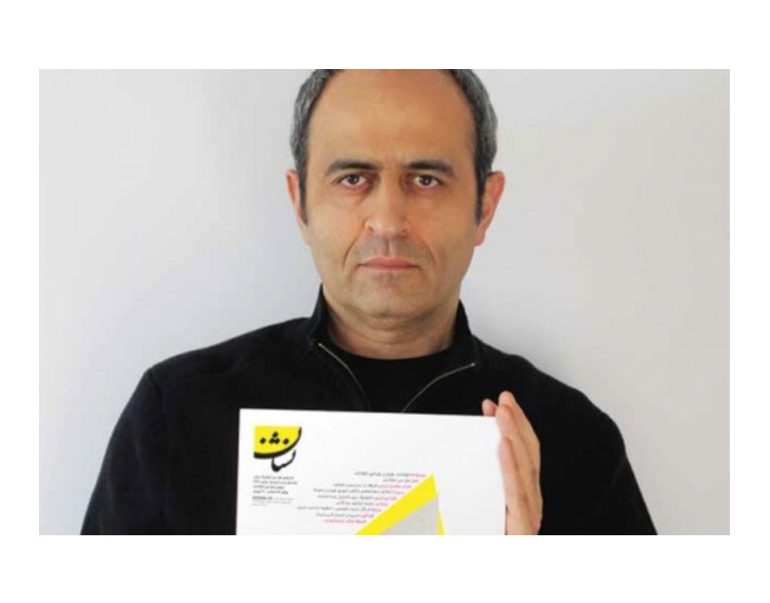In the last few years, being distinctly original (based on one’s culture and roots) is gradually being corroded by a wide variety of influences. Graphic design is often being blamed for getting homogenized as we move forward. Based in Iran, quarterly Neshan Magazine is a huge step in seeking that balance between sticking to one’s roots and a contemporary vision of design.
Needless to say, Persian/Iranian designs are extremely unique, but have hitherto been submerged in various political and cultural issues. However, they have been slowly rising above the surface now through various exhibitions and showcase of work all over the world, especially in the west. Neshan Magazine was launched in 2003 by some of the most well-known players in the Iranian graphic design landscape. The idea was actually born in October, 2002 but it took about 14 months to get the first issue out.

Majid Abbasi, one of the co-founders of the magazine, explains the vision behind the launch. “Our aim in publishing Neshan is to introduce Iranian graphic design to our community and to the graphic designers in other countries and cultures. At the same time, we decided to cover both contemporary graphic design and the past graphic art in Iran and the world. We decided to introduce the great masters of the twentieth century which had not been done on such a scale in Iran before.”

The other co-founders include Saed Meshki, Ali Rashidi, Firouz Shafei, Iraj Zargami and the late Morteza Momayez. Momayez was the editor-in-chief and contributed heavily in formatting Neshan and laying its foundations. His seat still remains unoccupied, says Abbasi. The magazine’s contributors’ list is highly interesting. Among the Iranians, writers such as Iraj Afshar (editor, researcher on Iranian art and literature), Mehdi Sahabi (artist, writer and translator), Farid Ghasemi (editor & columnist), Ebrahim Haghighi (former IGDS president, AGI member), Aydin Aghdashloo (artist and specialist on Iranian art), Mohammad Reza Riazi (historian) and others have contributed their writings. Neshan has also generously benefited from the works of renowned international names such as Steven Heller (New York), Rick Poynor (London), Emily King (London) and Jan Middendorp (Amsterdam), among many others.
Neshan describes itself as a professional and educational magazine with the intention of ameliorating ties between the graphic designers of Iran, Asia and all parts of the world. Says Abbasi, “We make the best use of all facilities and to receive original writings without paying — due to extreme financial restrictions. Therefore, we solicited cooperation of a large number of our colleagues inside and outside Iran. Fortunately, the number of cooperating colleagues increased rapidly and the journal gained national and international recognition and reputation as a result of the works published by these writers.”

Each issue picks up one particular subject which is evaluated from both national and international perspective. So far, the magazine has covered areas such as poster, book, logo, visual identity, stamp, education, Olympics and so on. “We also wanted to discuss and challenge subjects which are less known to the public and are not among the routine graphic design works. For example, “Handmade Design” (issue 25) and “Design Process” (the present issue),” adds Abbasi. Interestingly, one thing that has remained consistent in all issues is Iranian graphic design pioneers’ perspectives so that the history of graphic design in Iran is recorded and also serves as a reference point for contemporary Iranian artists.

As much as they would like, the magazine is not able to get published on a monthly basis right now mainly due to financial constraints. Abbasi agrees that being a quarterly has its own disadvantages including never been up to date. Sometimes the magazine has even taken about six months for one issue due to numerous difficulties.
Says Abbasi, “Pricing and subscription are the main difficulties for our publications during the international sanction to our country. At this time, nobody can subscribe abroad by transferring one-year cost of magazine. But we try to keep our relationship with schools, museums, international magazines by sending a free copy.”
The magazine’s content is a mix of Farsi and English and all the English content has been published on the website so far. Being based in Iran, an obvious question is that does the magazine face any cultural or religious limitations of any kind. Abbasi confesses that it does. “According to our religious society and Islamic country, we have numerous limitations for publishing any kind of articles or images against the rules.”

Moreover, unprecedented inflation rates, economic crisis and soaring prices of paper, print and other relevant services in Iran is seriously threatening the life of Neshan in the beginning of its tenth year in print. “Physical publication of books, newspapers and magazines in Iran and elsewhere is facing numerous problems today. In these conditions, independent journals like Neshan cannot expect much.”
Abbasi adds that inflation and economic crisis on one hand, and the development of electronic publication, easy access to digital copies for websites, CDs and DVDs, smartphones as well as the significance of updating and speedy publication on the other, are all transforming the publishing industry. His only hope is the emotional attachment to the printed matter, which he believes might be the last reason that could prevent the disappearance of print media altogether.
**
This article was first published in Kyoorius Magazine 17.

